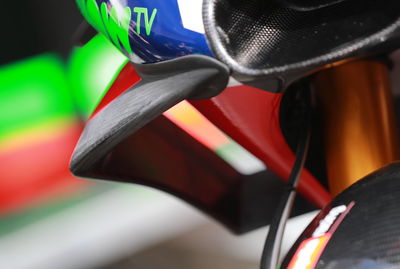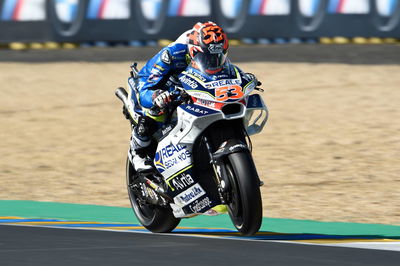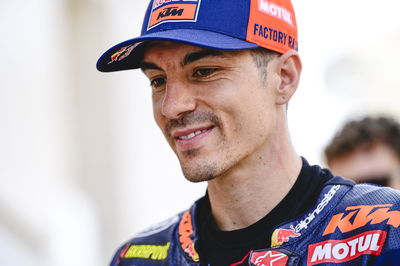MotoGP close to new wing regulations
MotoGP will 'probably' keep downforce fairings for 2019, but wing attachments will be subject to stricter regulations and must be used in the same configuration at all times.
This is likely to result in each rider having one 'wing' fairing and one normal fairing available.
That's the opinion of MotoGP Technical Director Danny Aldridge, who has helped draft a revised set of rules now under discussion within the MSMA (manufacturers' association).
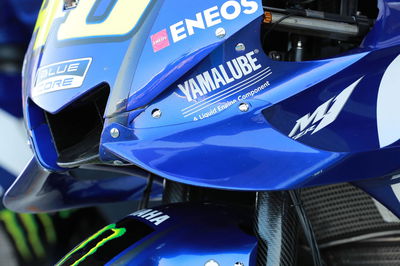
MotoGP will 'probably' keep downforce fairings for 2019, but wing attachments will be subject to stricter regulations and must be used in the same configuration at all times.
This is likely to result in each rider having one 'wing' fairing and one normal fairing available.
That's the opinion of MotoGP Technical Director Danny Aldridge, who has helped draft a revised set of rules now under discussion within the MSMA (manufacturers' association).
The current regulations ban the use of traditional wings but allow downforce devices ('attachments') that are 'integrated' within the fairing. Aldridge is the sole judge of whether a device or fairing is legal.
As reported in February, the biggest change for the 2019 proposal is a ban on the removal of parts or material from the fairing.
This will close a loophole which currently results in 'one' fairing design actually being used in multiple downforce configurations: Large wing attachments, small wing attachments, as a standard 'wingless' fairing etc.
"The wording of the rules allows you to remove material," Aldridge told Crash.net.
"The concept behind that was for things like handguards [and drilling holes etc], but the teams have rightly interpreted the rules as they are written and so they've now got multiple fairing parts.
"This was not the concept, but once one manufacturer has done it the rest have to follow.
"So it’s at the manufacturers' request that we start looking at the regulations for 2019 and beyond.
"We've tabled a couple of proposals to them.
"It's going back-and-forth between us - which is me, Corrado [Cecchinelli, MotoGP Director of Technology] and the MSMA.
"We're discussing, do we want to completely ban every attachment or are we going to allow you to have limited attachments of a certain size and not remove any material?"
Wing ban unlikely
A complete ban on wing devices appears unlikely and would be difficult to implement without effectively enforcing a single fairing shape.
"It looks like the majority [of manufacturers] are in favour of keeping [the wing attachments], because they do seem to work and these aero packages are now part of the sport to a certain degree," Aldridge said.
"From the media and public side, it's nice to see different design concepts. Whether you love them or hate them, they generate a lot of interest.
"The most important thing is safety and if the manufacturers said to us, 'we want to get rid of them completely' we would be more than happy to do that.
"The biggest issue with that is unless we go to a system that is more like a single skin - and this was one of the proposals - it's very hard to write a rule [to ban any kind of attachments]."
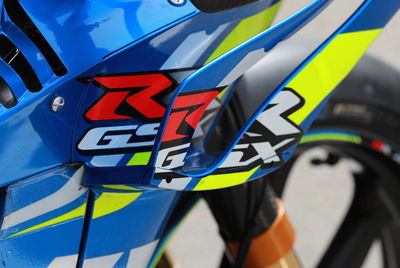
Aldridge added: "It's a case of which [option] they prefer. It's down to the MSMA to say 'Okay, we all agree we'll go in this direction'. Because we can't change technical rules without their agreement. So the only reason we are doing this is at their request.
"I think we are getting very close [to an agreement].
"My personal opinion - it's not confirmed - is that we'll probably go to; Yes you can have [wing] attachments, but they are restricted in size - there will be criteria to follow - and you cannot remove material or attachments.
"So you won't see fairings change from race to race as attachments and material are taken off and on.
"What you see at the first race will be it, until they do the one in-season upgrade."
Such a ruling would also reduce development costs, since manufacturers would not be able to pursue the current 'with or without' fairing specifications.
"For example, at the moment Marquez can remove [his wing attachments] as he wants because they are bolted on. Which is very clever and allowed within the rules.
"In future it won't matter if it's [removable] or not. Once you homologate it, it stays on.
"Some teams will probably still [make wing attachments removable] for cost reasons, because if you mould them into the fairing and crash like Marquez did on Saturday [breaking one wing attachment], you'd lose the whole fairing. Being bolted on, you can just replace the damaged part.
"So - if the proposal is agreed - we will still allow the attachments to be bolted on for cost reasons, and made in as many parts as they want, but the fairing must be used as a complete package at all times.
"Hopefully we are getting very close to finalising what will happen for 2019."
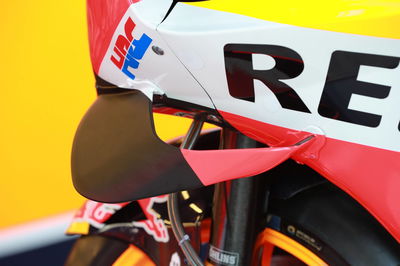
One with, one without
The current system of one fairing design at the start of the season followed by one upgrade is set to continue.
"From 2018 you start the season with your original fairing, then you are allowed one upgrade and you can use both. But you can't mix and match the parts from each. You can either use the complete initial 2018 or the complete 2018 upgrade."
If the ban on removing parts and material is agreed for 2019, then "what I imagine they will do is to have one fairing with attachments and one standard fairing, without.
"The prime example is someone like Dovi, who often swaps between a standard fairing and with attachments.
"If it's agreed next year that you can't remove anything, you might find there are more differences between the riders fairings. They might be more tailored towards each rider."
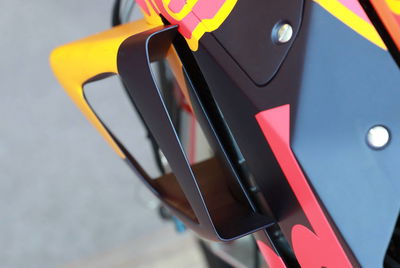
An imaginary box
Presently, under a system agreed by the manufacturers, Aldridge is the 'sole judge' of whether a device or fairing is legal.
The 2019 proposal will bring more clarity by specifying a range of dimensions for wing attachments.
"There will be an imaginary box shape that the attachments have to fit within," Aldridge explained.
"The dimensions will state the amount they can protrude outwards and there will be a safety element in that the front must be swept and so forth.
"That will be in the rulebook and then there's going to be a pamphlet written by me, saying what I've allowed and what I haven't allowed so the manufacturers have got something to refer to.
"What's been happening is that I'd tell one manufacturer, 'you can't do that'. Then another manufacturer would come to me with the same thing and I'd give them the same answer.
"What we'll do is put all that information into a booklet and all the other manufacturers will see they are not allowed to use that concept, but without stating which manufacturer has approached me to ask the question.
"So it'll be a list of what you can't do, rather than what you can, and I won't get the same question six times."
However most, if not all, of the current fairing designs would still be legal under the 2019 proposal.
"I don't think you'll see a lot of difference from what we have now. They might be slightly smaller to fit within the new rules - if they are agreed - but not much difference in shapes.
"If there is a difference, it's probably because they've found something better to work with."
